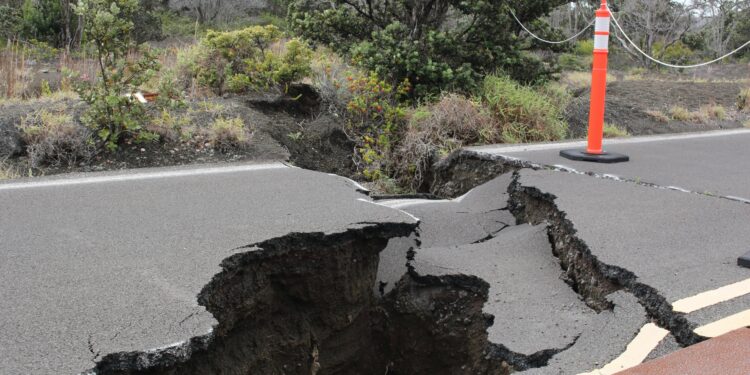Credit: Wilson Malone from Pexels
Earthquake researchers believed for decades that the friction of rocks within fault lines had a simple relationship with temperature.
However, a new study published by the Proceedings of the National Academy of Sciences led by USC suggests otherwise. His results reveal that different underlying mechanisms affect the frictional strength of faults, challenging a common understanding of seismic activity among researchers.
“The classic view of fault friction has always been that fault friction continually evolves with temperature,” said Sylvain Barbot, associate professor of earth sciences at the USC Dornsife College of Letters, Arts and Sciences. “But my study shows that a direct effect of friction is largely unrelated to temperature until a rock’s brittle to semi-brittle transition point, where the effects of temperature change dramatically.”
Fragile transition
The research was conducted with data from experiments on various rock types, including granite, basalt and olivine, under conditions mimicking those deep within the Earth. Barbot discovered that when rock changes from brittle to semi-brittle, a change occurs that is crucial to understanding the mechanics and geology of rocks.
In a fragile state, rocks deform and deteriorate through fracturing and faulting. In a semi-brittle state, rocks exhibit a combination of brittle and ductile deformation, which is the process by which rocks permanently change shape by “flowing” or “bending” under the influence of a constraint.
“Unlike traditional models of the frictional behavior of rocks, I found that the direct effect of friction does not always correlate with temperature,” Barbot said. Instead, there are abrupt changes in rock friction during the transition to semi-brittle behavior. “This means we need to rethink the fundamental basis of fault mechanics used to predict seismic activity from earthquakes.”
Rethinking seismic behavior
In the context of rock friction studies, the direct effect of friction refers to the immediate change in friction in response to a sudden change in sliding velocity as two solid surfaces move relative to each other along a fault or fracture.
Most theories of friction are based on the belief that the speed at which two surfaces move relative to each other continually depends on temperature. Barbot’s study calls into question the assumed dependence on thermal activation, which will require reconsideration of predictive fault friction models to accurately predict earthquakes.
The next step in this research is to further refine the understanding of fault friction. Barbot said: “When incorporated into physics-based models of the seismic cycle, each refinement we discover has the potential to improve the accuracy and reliability of seismic hazard assessments and long-term forecasts. »
More information:
Sylvain Barbot, Does the direct effect of friction continually increase with absolute temperature?, Proceedings of the National Academy of Sciences (2024). DOI: 10.1073/pnas.2405111121
Provided by University of Southern California
Quote: Dependence of friction of seismic faults on temperature different from what was previously thought (October 14, 2024) retrieved October 14, 2024 from
This document is subject to copyright. Except for fair use for private study or research purposes, no part may be reproduced without written permission. The content is provided for informational purposes only.



